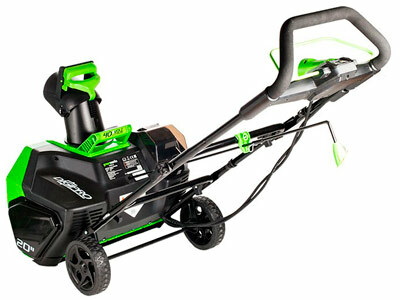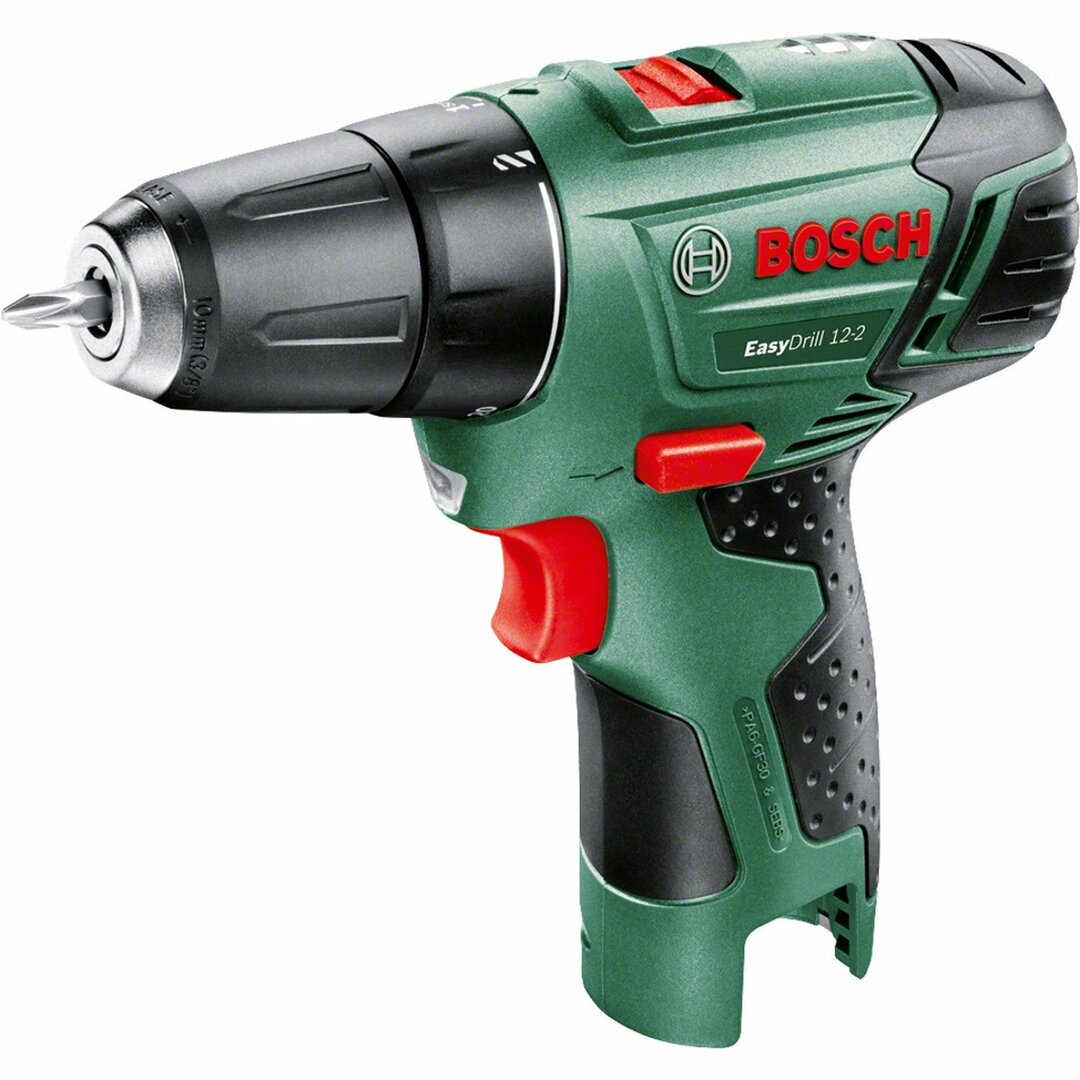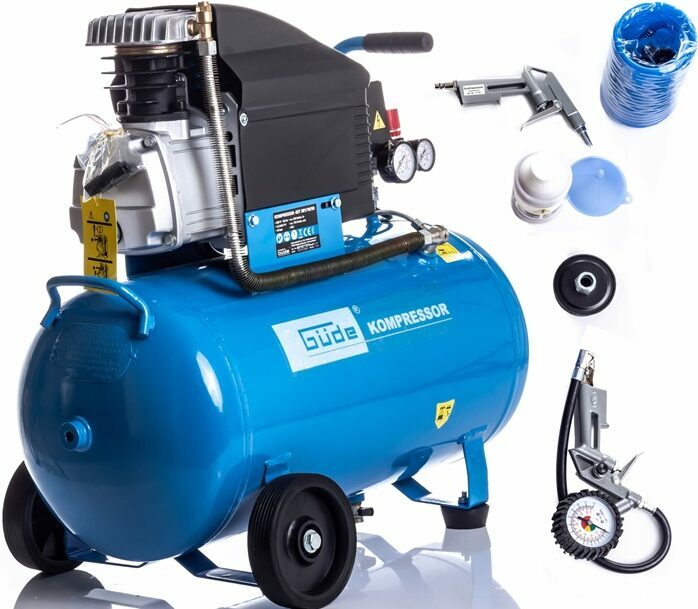Bright flower beds and lawns with lush greenery are the decorative basis of any suburban area. But I really don't want the garden to turn into a faceless desert in the autumn-winter period. Especially if this period lasts almost 9 months a year! Coniferous landscaping will help you keep your garden interesting, no matter the time of year.
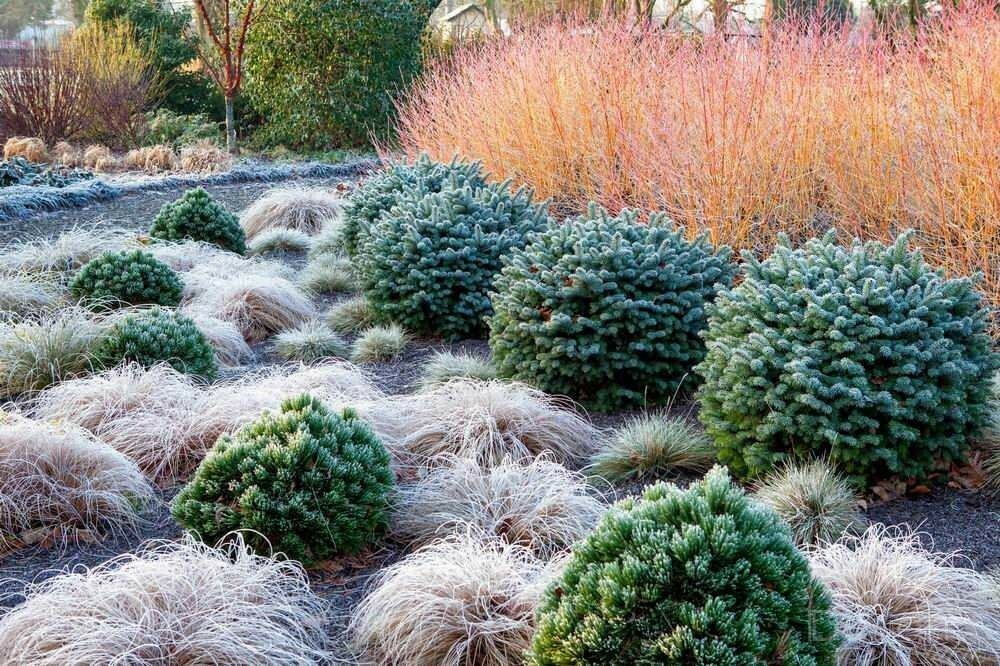
A coniferous garden looks attractive at any time of the year
Peculiarities
Content
- Peculiarities
- Varieties of conifers for the garden
- Spruce
- Fir
- Pine
- Thuja and cypress
- Juniper
- Yew
- Composition rules
- Care rules
- Watering
- Top dressing
- Soil mulching
- Pruning
- Preparing for the cold
- Video: Rules for the use of conifers in the garden landscape
- Photo of conifers in landscape design
Ephedra in a summer cottage landscape both in the form of compositions and in a single version look very impressive. Even the area does not matter, they grow well in a limited space. It is important to remember that some conifers are extremely "unfriendly" to their fellows and to deciduous crops. Therefore, in order to avoid disappointments and unpleasant surprises, it is worth learning more about these interesting plants.
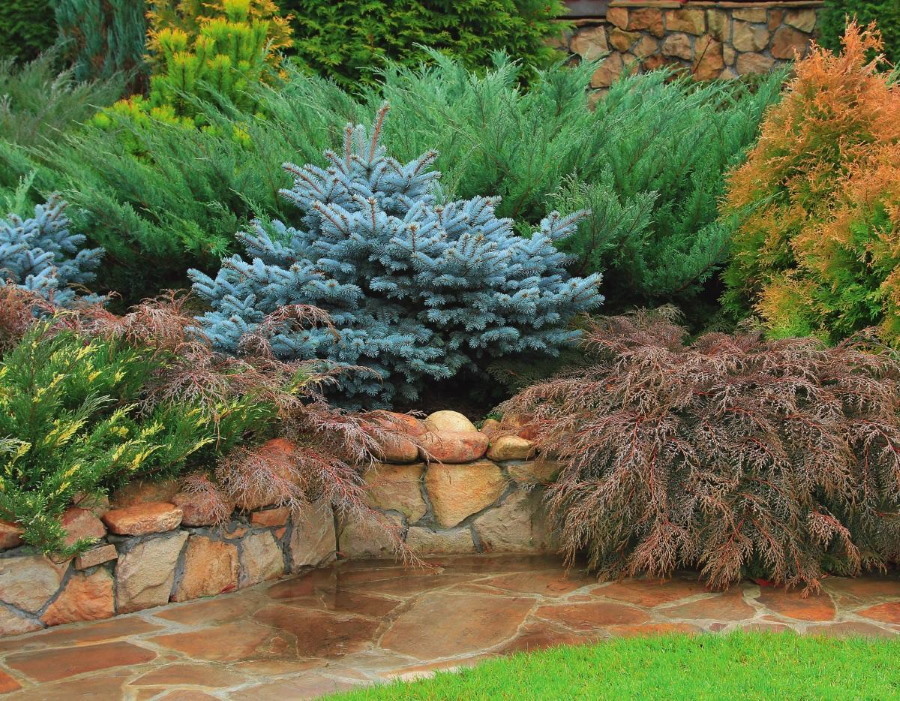
Conifers are good on their own and go well with other "green neighbors"
A modern assortment of all kinds of coniferous representatives guarantees that even the most fastidious gardener will find the ideal option for his site. In the middle lane, many types of pines, cedars, junipers and larch trees feel good. A little further south there are all the conditions for growing Mediterranean cypress, thuja, and other thermophilic conifers.
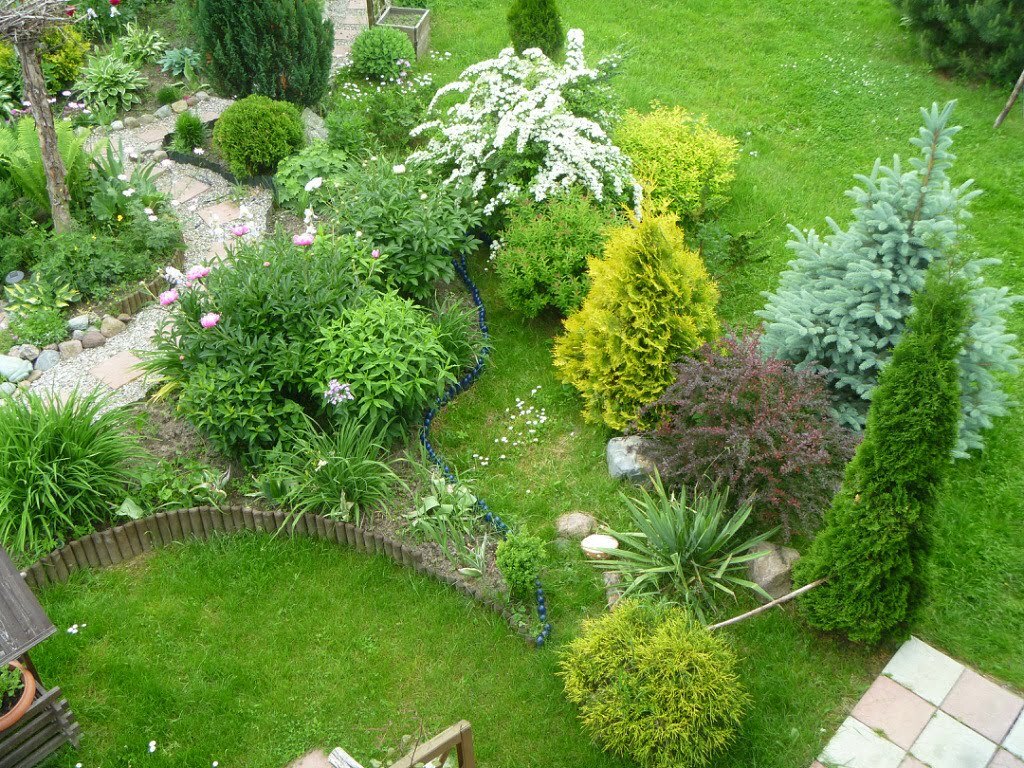
A variety of shapes, shades and types of crowns allows you to create a variety of garden compositions from conifers
Despite the fact that these crops are called evergreens, they have both "pros" and "cons". First about the benefits:
- Such plants thrive where there is a lack of sunlight. So, if you decide to equip a recreation area or a flower bed behind the house, feel free to plant coniferous crops there.
- Conifers perfectly tolerate a haircut, so it is possible to grow a shrub or tree of an unusual shape. The main thing is to cut correctly so as not to spoil the plant.
- Some coniferous shrubs themselves have the correct shape. This only makes the work of gardeners easier.
- Since these are evergreens, they delight you with their appearance and aroma all year round. It is no coincidence that such crops are planted in public places.
- Thanks to a good root system, ephedra can do without water for a long time. So in any area, even very arid or with sandy and stony soil, such plants take root without any problems.
- Plants are planted both singly and in groups. The quantity does not affect their appearance, they are equally effective. Someone prefers to create hedges from conifers, but this is not an easy task.
- The coniferous aroma is also considered a pleasant bonus to the appearance. It also has healing properties. It is believed that different varieties of conifers planted in the same area have a beneficial effect on health in general. And if your site is located within the city, then another advantage of pine and fir trees is that they perfectly filter the air.
Now let's look at the "dark" sides of the conifers. The main disadvantage, although very relative, is the long growth period. It takes more than a dozen years for a full-fledged tree to grow from a small seedling. The fastest growing species of the unit.
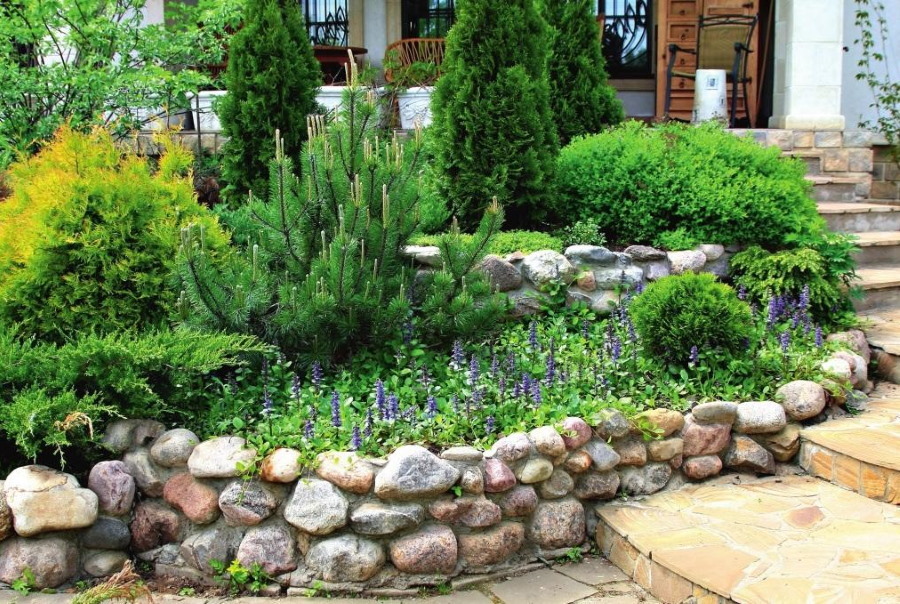
Conifers are planted along the perimeter of the site, along the sides of garden paths or in the form of single compositions throughout the territory
Varieties of conifers for the garden
Immediately, we note that there are a lot of varieties of conifers. The only caveat is that not all grow well in different climatic zones. The general classification of plants is as follows:
- Small and creeping. Compact conifers look spectacular in a company with medium or tall trees. And from creeping conifers, you can generally create flower beds. It turns out an unusual, but very memorable design. Alternatively, plant a mountain pine Mini Pug on the site. It has a pillow-like appearance and is sure to beautify your garden area. And the beautiful Lombers spruce differs from its "counterparts" by the emerald shade of the needles, and is guaranteed to become a worthy accent of the landscape composition.
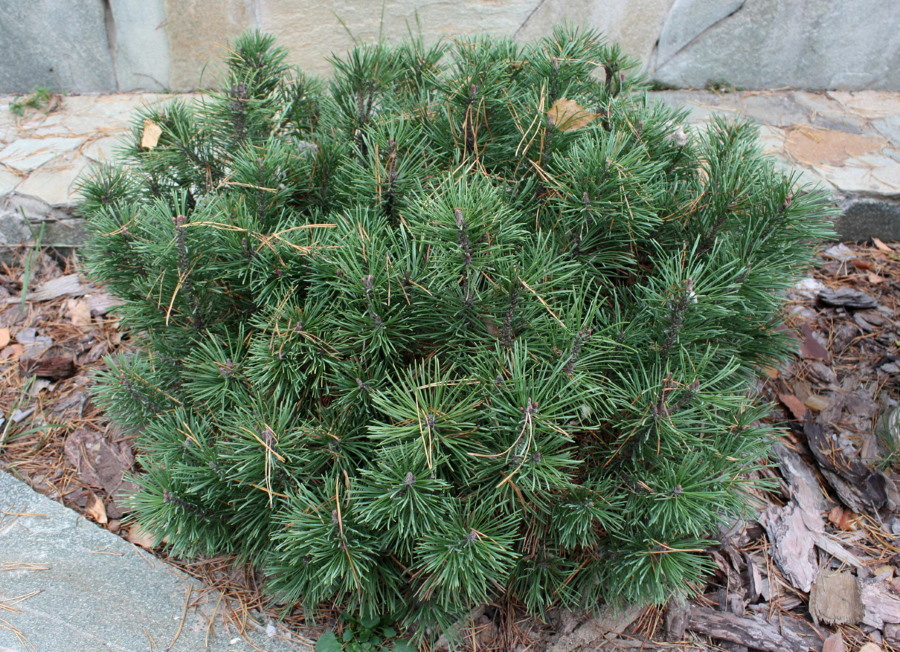
Pine Mini Pug grows very slowly, retains an attractive appearance for a long time and does not require special care
- Medium conifers complement flower beds or create hedges from them. Most often they buy Konica spruce or berry yew. The latter, thanks to the red berries, creates a festive atmosphere and cheers up. Golden yew is no less effective, the main advantage of which is the ability to get along with any plants.
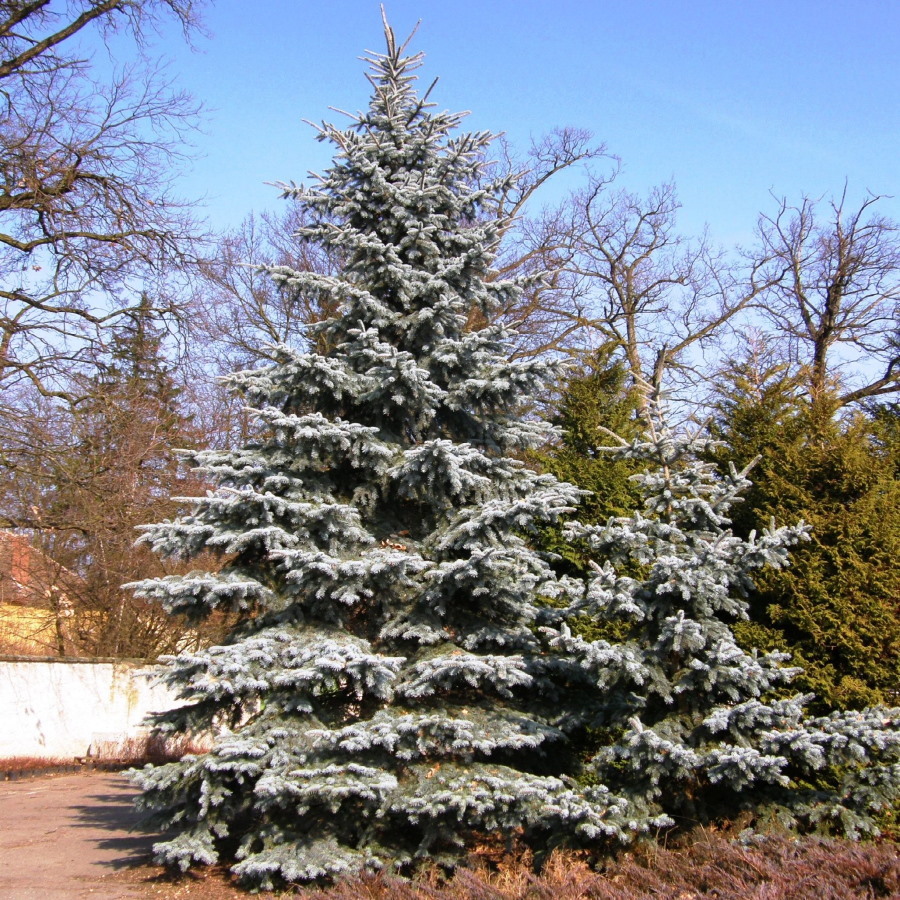
Spruce Hoopsi is a tall tree with needles of a noble blue color
- High. The most demanded tall species: thuja western, tall juniper trees and pine. The blue spruce is another conifer that will brighten any landscape. An important nuance: tall conifers grow to unprecedented sizes (for example, the Hoopsie spruce reaches height 15 meters), so if you do not need an infinite giant on the site, regularly pinch shoots.

Let's dwell on the most demanded conifers in more detail.
Spruce
Widespread in the middle lane. Spruce is completely unpretentious to keeping conditions. By the way, both ordinary spruce and its numerous varieties are used to create interesting landscape design. The most spectacular is the blue spruce, which, due to the unusual shade of the needles, looks especially solemn. Hoopsi spruce and a fluffy Serbian Christmas tree are also planted on the plots.
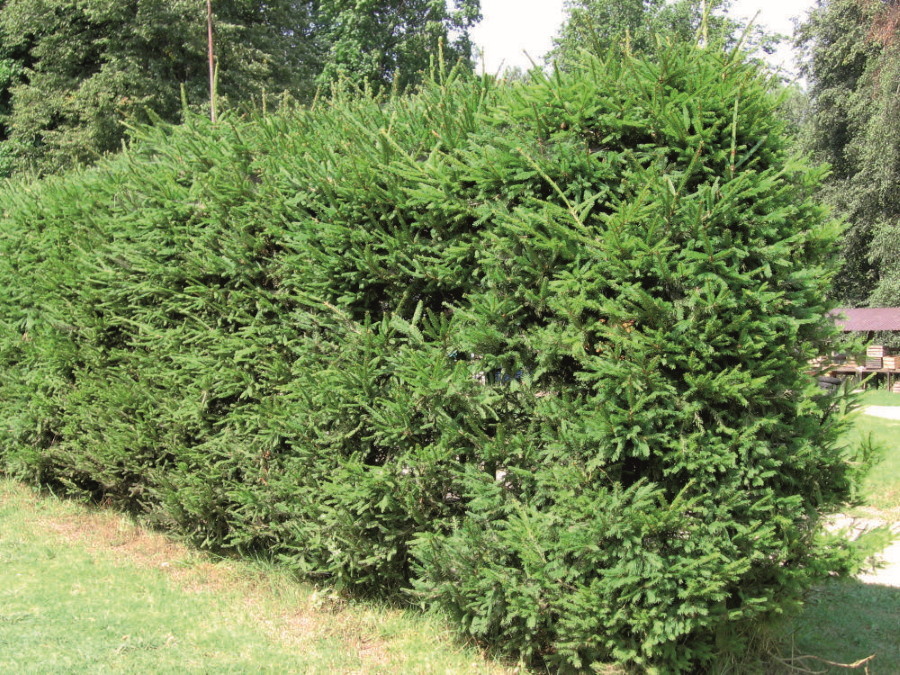
Barbed spruce can be used to grow an impassable hedge
If you want to plant a medium-sized Christmas tree, buy the Canadian Konica spruce, or the low-temperature Tompa spruce.
Fir
This representative is distinguished by dense needles and interesting cones. Do not hesitate, the fir on the site will become a real gem of design, and will surely attract the attention of your guests.
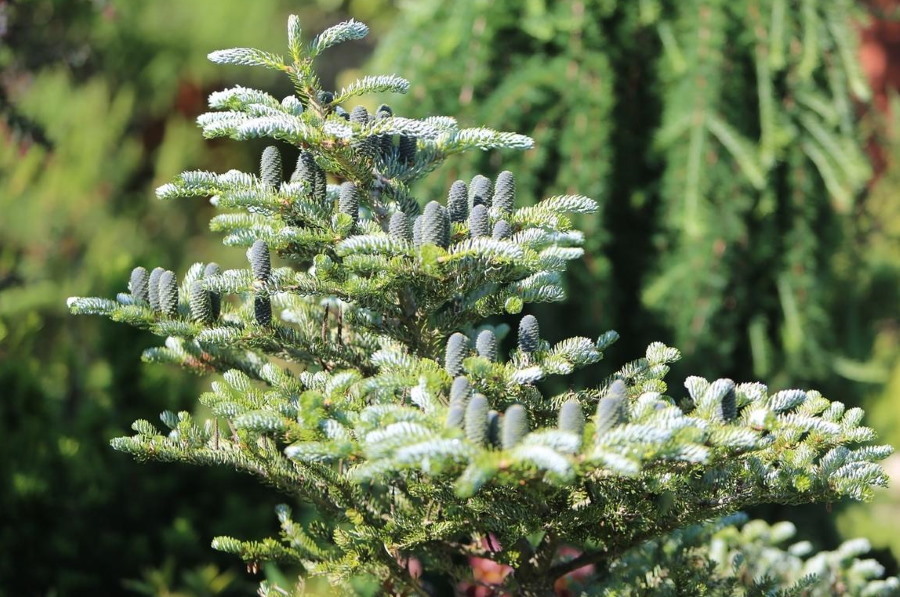
Korean fir is decorative not only for its cones, but also for its two-colored needles, shimmering in the sun
The only thing to consider is that the fir is demanding on the soil and grows poorly in areas with polluted air. She also needs regular watering and does not like low temperatures. In addition, you will have to control the young shoots that are growing at a rapid pace, otherwise the tree will lose its shape.
Pine
It is she who owns the palm for popularity and general admiration. Unpretentious to soil and climate, but a luxurious crown will require a place. This beauty is not used to "living" in cramped circumstances. There are a huge number of pine varieties. It is possible to choose an option from dwarf to giant.
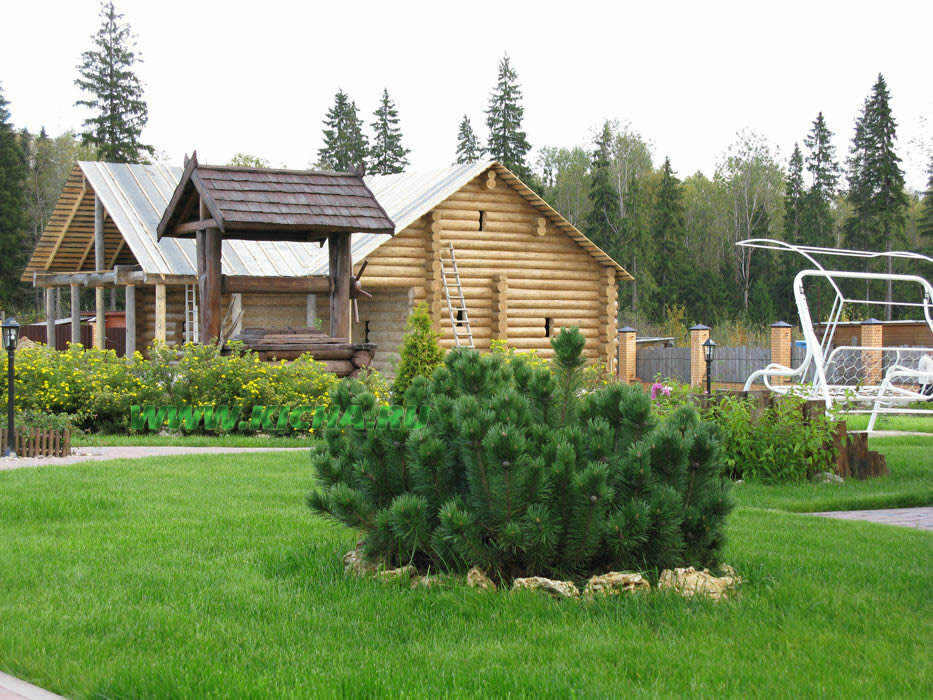
Low-growing mountain pine will revive and complement the lawn or alpine slide
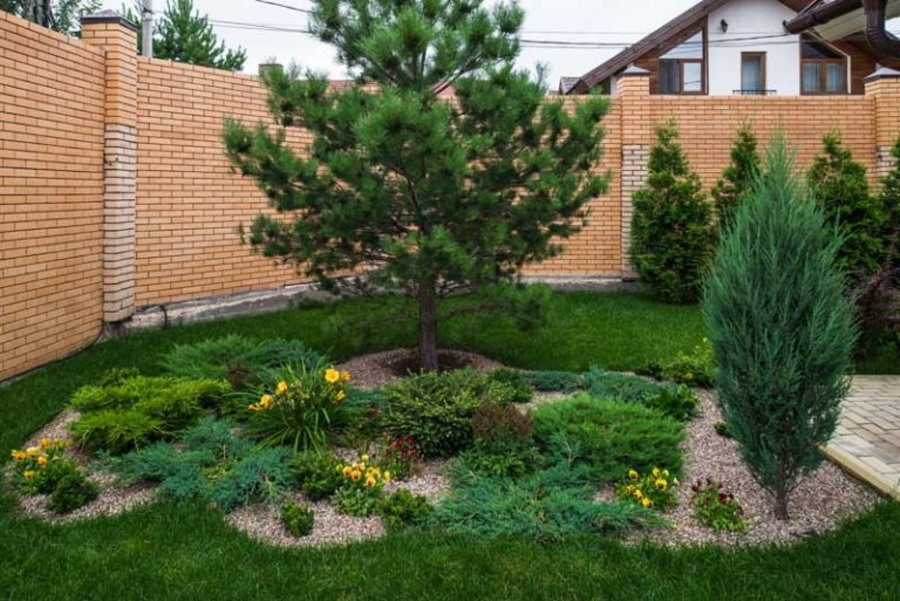
Scotch pine can grow up to 30 meters high, while the lower part of the trunk will be bare, and the crown will remain only in the upper part. Therefore, for the garden, it is better to choose hybrid varieties of low height with a dense crown.
Thuja and cypress
Grow well in urban environments. They grow even in a polluted environment, tolerate low temperatures well. They do not require special care. Thuja is characterized by a scaly structure, and cypress trees can be both scaly and needle-like. The shape of the crown is so diverse that you can easily choose an option suitable for any style and area of the site. Thanks to their dense crown, both thujas and cypresses are great for creating hedges or mixborders.
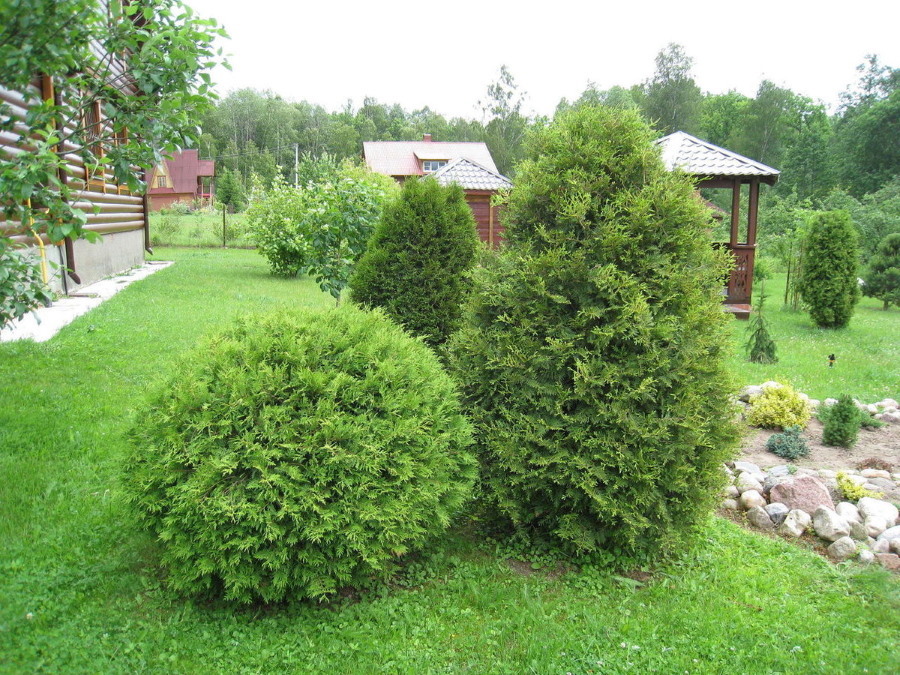
In landscape design, both spherical and pyramidal thuja are used.
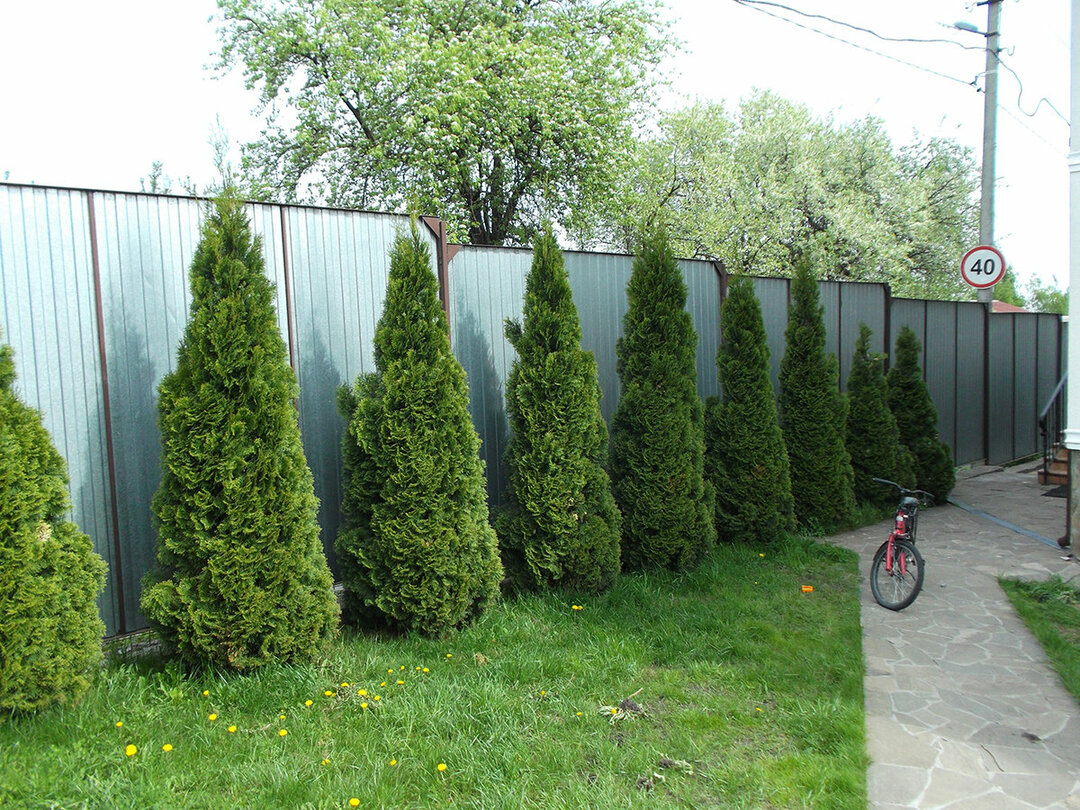
Cypresses are residents of warm regions; these plants cannot tolerate severe frosts.
Juniper
Junipers come in a wide range of sizes and shapes. From tall (up to 10 meters high!), To creeping species and shrubs. Scaly-needle needles are common to all variants.
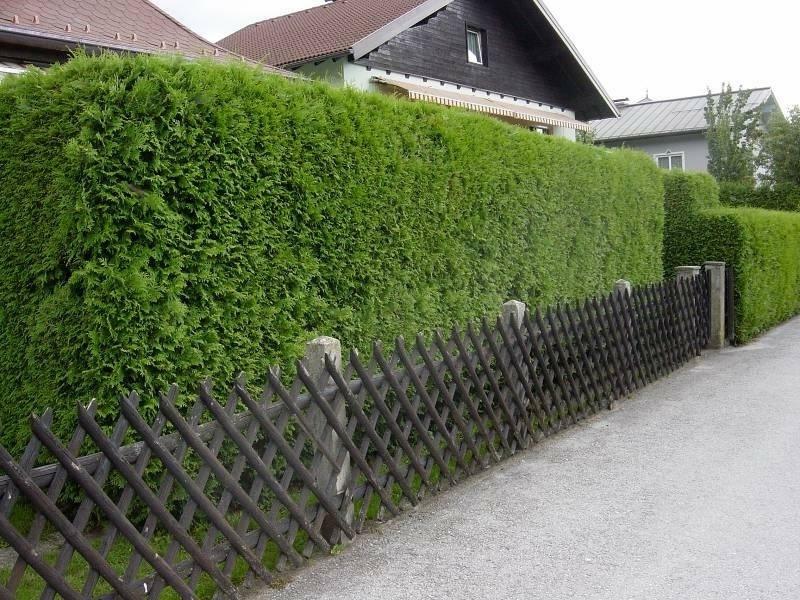
Common juniper is used for both molded and free-growing hedges.
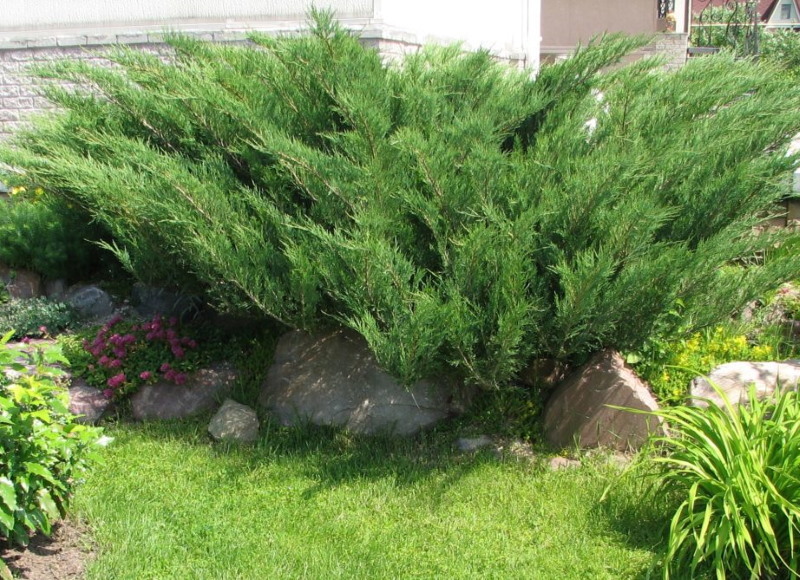
Cossack juniper is able to grow on any soil, is not picky about watering and very rarely burns in the sun
Cossack juniper is the undisputed leader in popularity. It looks beautiful both in composition and as a hedge. The typical color of the juniper is green or bluish with a gray bloom. Certain types of Chinese juniper are distinguished by a unique golden yellow hue.
Yew
It is quite rightly called the most decorative representative of conifers. Wide long "thorns" and bright fruits look impressive and unusual. Although it grows very slowly, many people prefer to grow yew for creating a hedge. The most popular types are berry yew, medium and pointed.
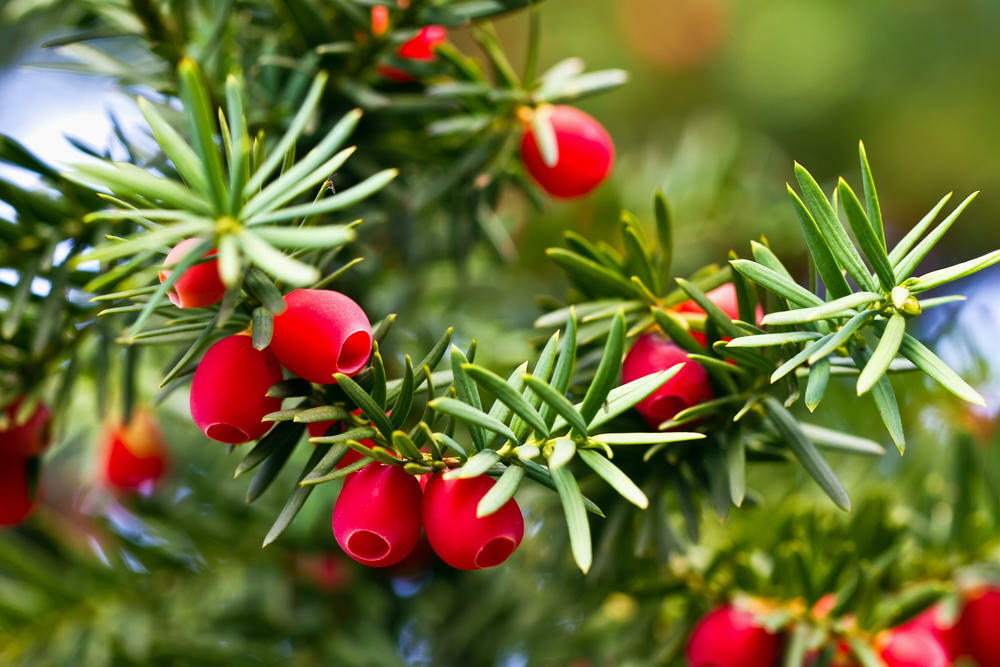
Yew berry prefers calcareous soils and tolerates strong shading
Composition rules
Compositions of coniferous and ornamental shrubs are a spectacular decoration of the site. And although all kinds of spruces and pines in general are not picky about the conditions, it can be difficult for them to get along with other plants, and even with each other. For example, the cedar will not tolerate the neighborhood with spruce, thuja or pine, and larch is completely used to living alone, without any fellow neighbors.
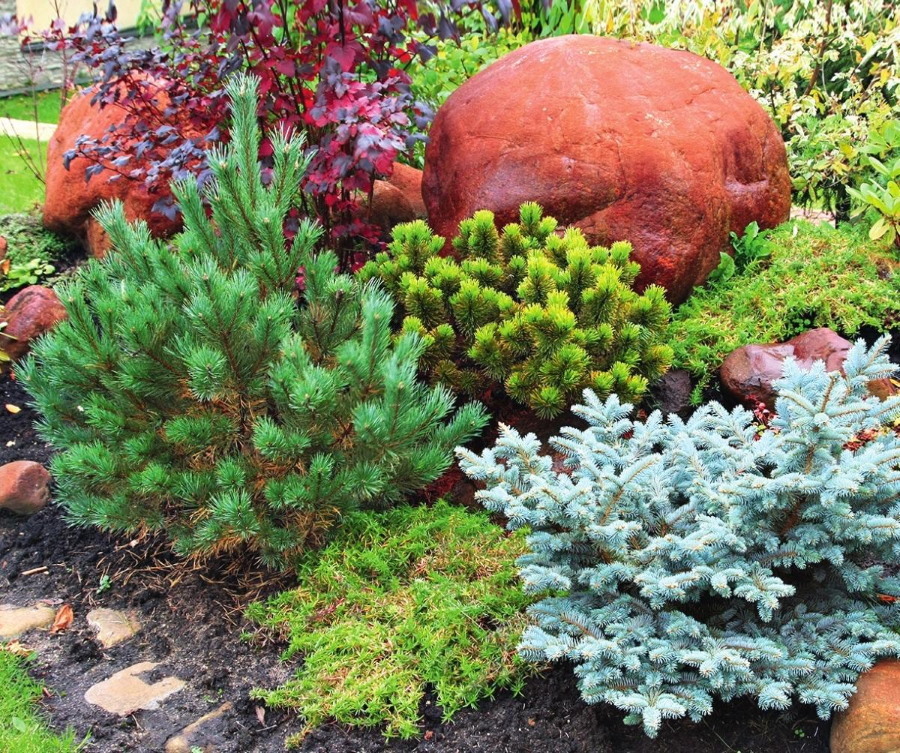
Low-growing conifers are perfectly combined with large boulders
Planting birch and bird cherry next to a pine or thuja, you will leave conifers without adequate nutrition, since representatives of deciduous trees will take all the nutrients from the soil. Against the background of conifers, roses look very impressive, but they need constant fertilization, since the soil under the spruce, pine or fir becomes alkalized.
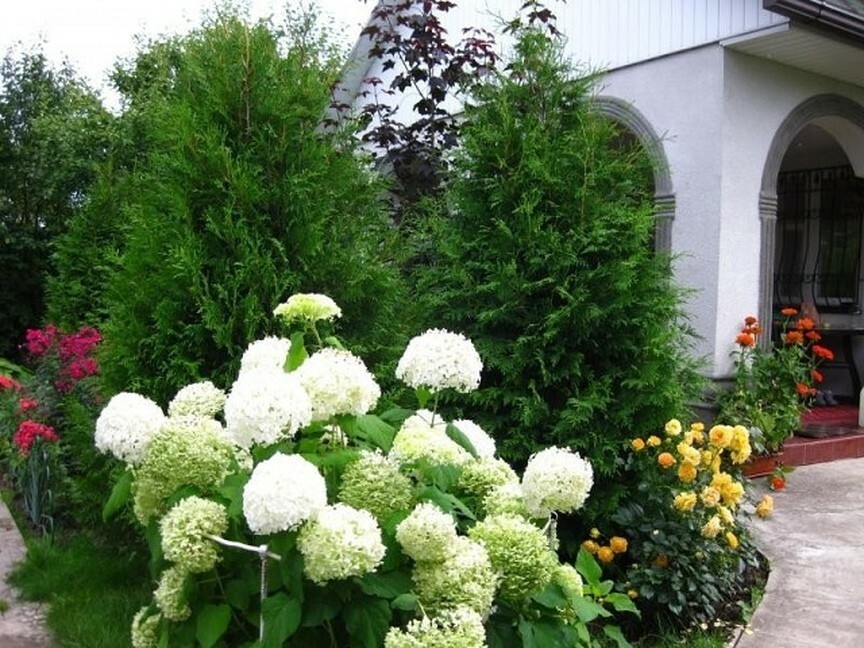
The dark green needles of the western thuja will serve as an excellent background for the brightly blooming hydrangea
Another way to effectively design a site is to combine medium-sized and low conifers with deciduous shrubs and grasses, as well as perennial shrubs. Hydrangea and rhododendron are considered to be proven "companions" of coniferous species. Well, as they say, the ageless classic of the genre is a green lawn "topped" with thuja or a compact spruce. Therefore, if you are not sure that you can create a full-fledged flowerbed with a "needle" accent, limit yourself to the latter option.
Care rules
For the most part, conifers and shrubs are shade-loving. Therefore, they are planted on the western or eastern side of the site. The flowerbed "with the participation" of conifers along the house looks interesting. This is a great opportunity to save space - you do not need to allocate a large area - and also a way to decorate the site in an unusual and beautiful way. In addition, conifers very well "fit" into the landscape of a gentle slope or the coastal zone of the reservoir. By the way, the reservoir may be small, but then the ephedra is planted compact.
Over time, the tree will grow, so when deciding on a place for a young seedling, take this into account so that in the future there will be enough space for both the root system and the crown.
Despite their unpretentiousness, ephedra still need some care. They need to be weeded, loosened and fertilized. The overgrown branches are cut off, and the young shoots are pinched in time, so that the shape of the plant is preserved. It is recommended to hide shade-loving shoots under an awning in the warm season, and insulate young and fragile ones during winter.
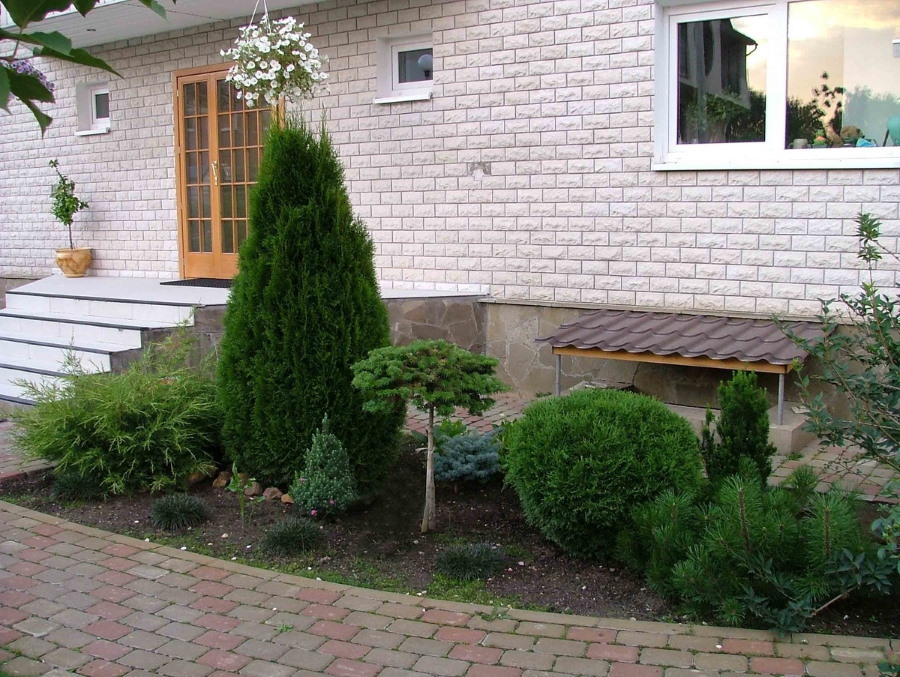
All conifers are rather picky and do not need "overprotection"
Let's consider the recommendations for care in more detail.
Watering
Conifers are considered drought tolerant plants (especially pines and blue spruces). They need watering only in the first two years after planting. At this time, they are watered 1-2 times a week (depending on the weather), at the rate of 5 to 20 buckets per plant (the amount of water depends on the size of the tree). At the same time, the rule is observed: in spring and summer watering is moderate, and in autumn - abundant.
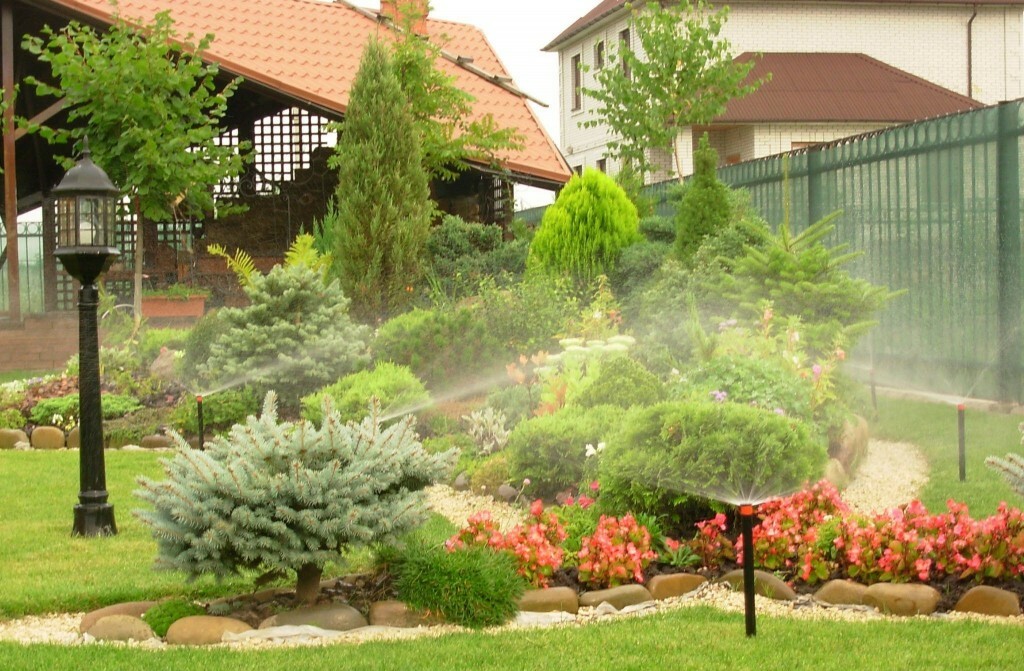
Almost all coniferous plants like to irrigate needles, especially in the hot summer.
If we talk about thujas, then, unlike other conifers, they do not tolerate drought very well, so the soil under them should be moist all year round.
Top dressing
Unpretentious care does not exclude the obligatory fertilization of the soil under the conifers. Fertilizers must be applied at least twice a year, starting from the second year after planting the plant on the site. Today, formulations labeled "spring for conifers" or "autumn for conifers" are available, so you don't have to puzzle over the question of what to feed.
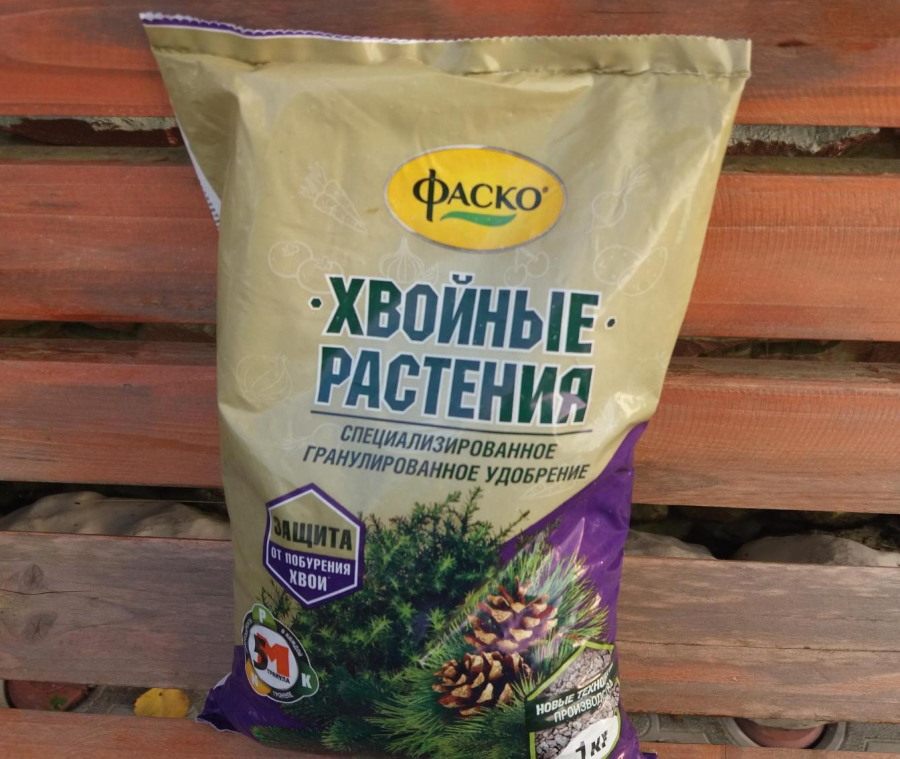
Specialized fertilizer for conifers contains all the necessary elements
For newly planted and valuable crops, foliar feeding is also recommended. Such substances not only stimulate growth, but also protect against all kinds of pests and diseases. In addition, such "support" is simply necessary for weakened plants. It is better to add a rooting agent under the problematic “instances”.
Soil mulching
Mulching is an indispensable "measure" for maintaining the required soil moisture. Straw, sawdust or peat are used as mulch. The most effective process is the addition of pine bark, which is laid out in a layer of at least 5 centimeters. And it looks aesthetically pleasing, and keeps the earth from overheating and drying out for many years.
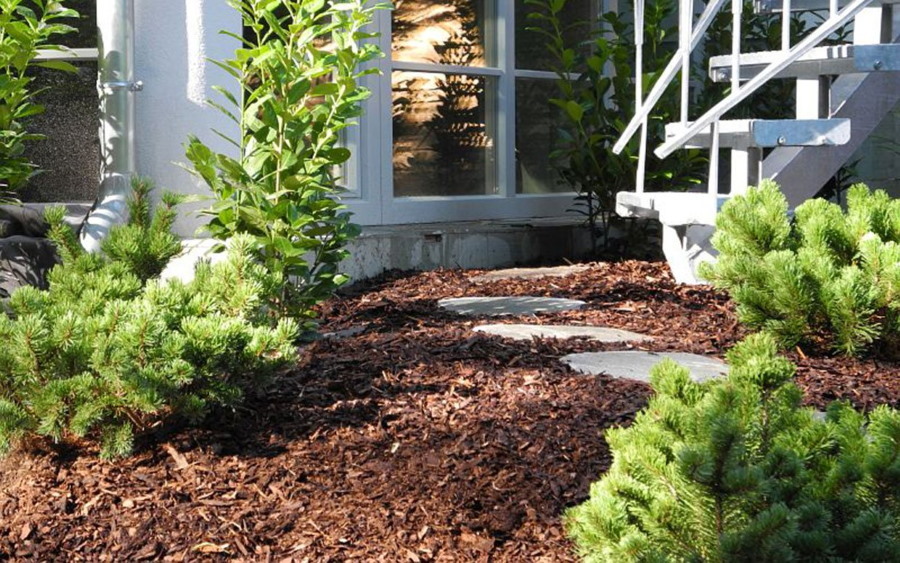
Mulching will significantly reduce the need for watering
Since conifers do not like dense soil, you need to loosen it regularly. This is usually done immediately after watering, and shallow - up to 5 centimeters.
Pruning
Typically, conifers do not need regular pruning. But, from time to time, this procedure is still necessary. The whole "haircut" comes down to forming a crown, and subsequently maintaining a given shape. You also need to make sure that there are no dried branches.
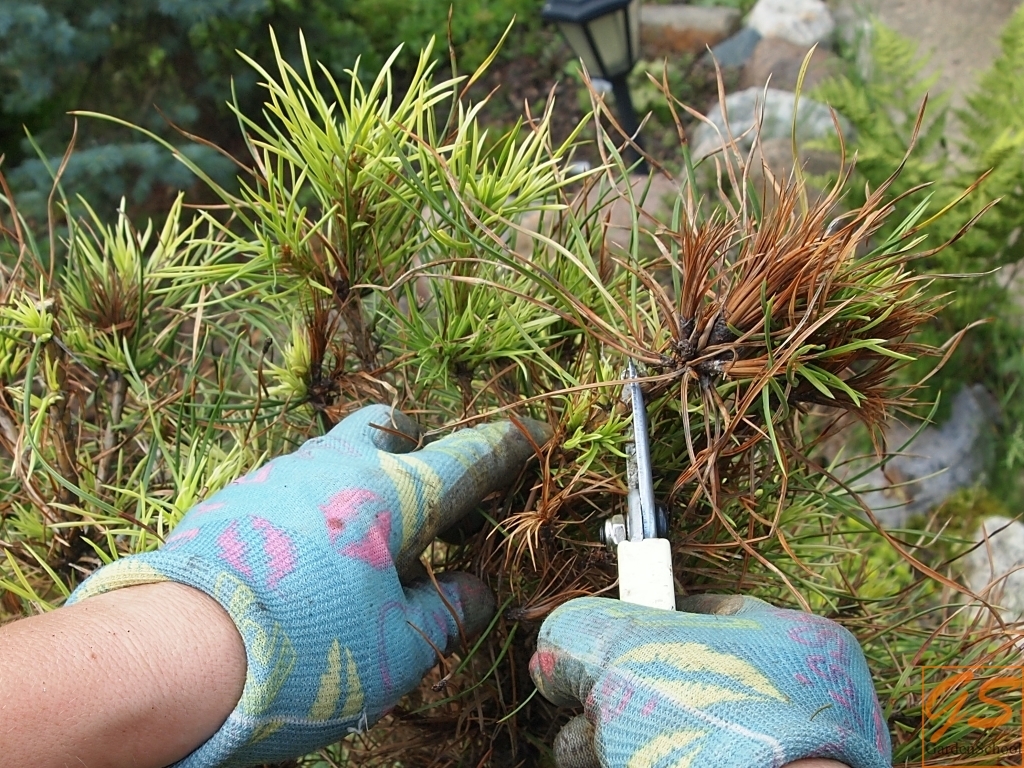
Sanitary pruning is carried out as sick and dried branches appear
But individual species cannot exist without pruning, for example, the Cossack juniper. It grows very quickly, and if you give it free rein, then after a while you simply will not recognize it, it will take up all the nearby space. In addition, for a juniper, such a procedure is completely painless, and it overgrows very quickly.
Pruning is also necessary to remove diseased branches. In this case, do not forget to sterilize the pruning shears so that it does not become a "carrier" of infection.
Preparing for the cold
Although most conifers are not afraid of frost, remember that icing, snow and wind can harm them. Branches break under the weight. Therefore, for the winter period, the plants are tied with twine and the snow is regularly removed.
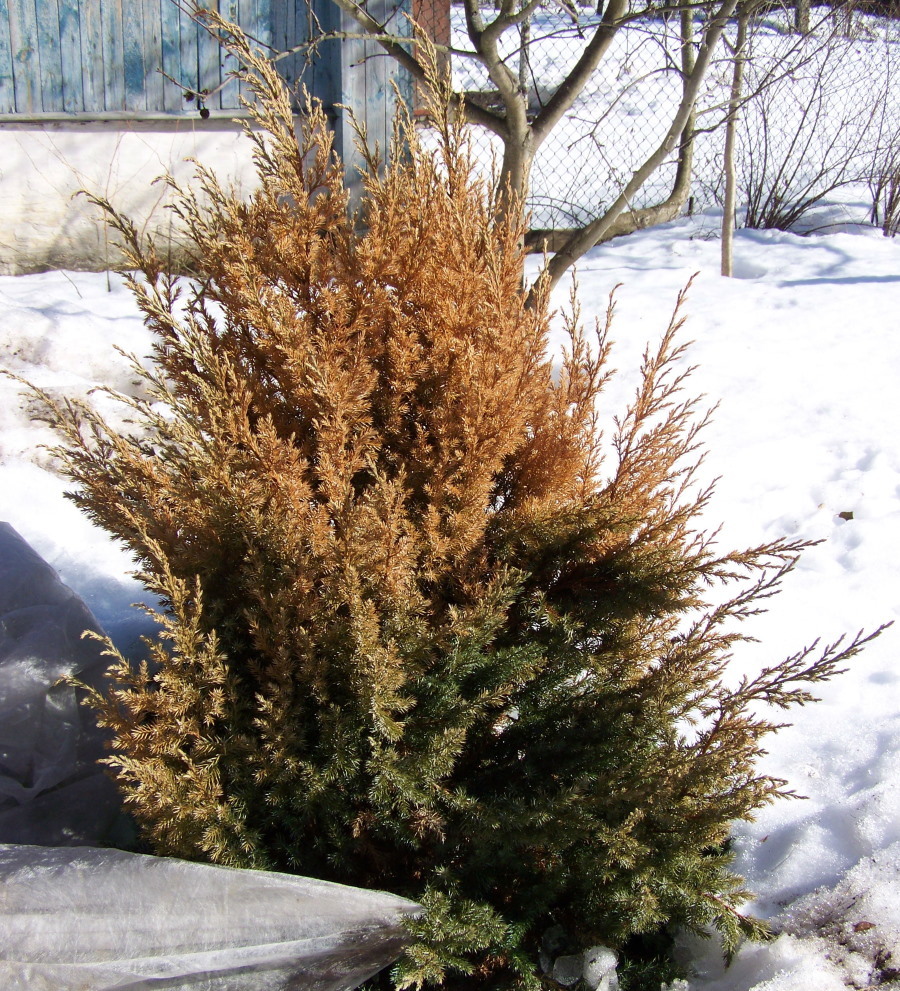
Most conifers are not afraid of frost, much more dangerous for them is the bright sun at the junction of winter and spring.
And in February and March, the plants are negatively affected by wind and sun. Such an impact dries up the needles, and the shrub (or tree) loses its presentable appearance. To avoid such problems, the plants are tied with a non-woven fabric or shielded from the sun.
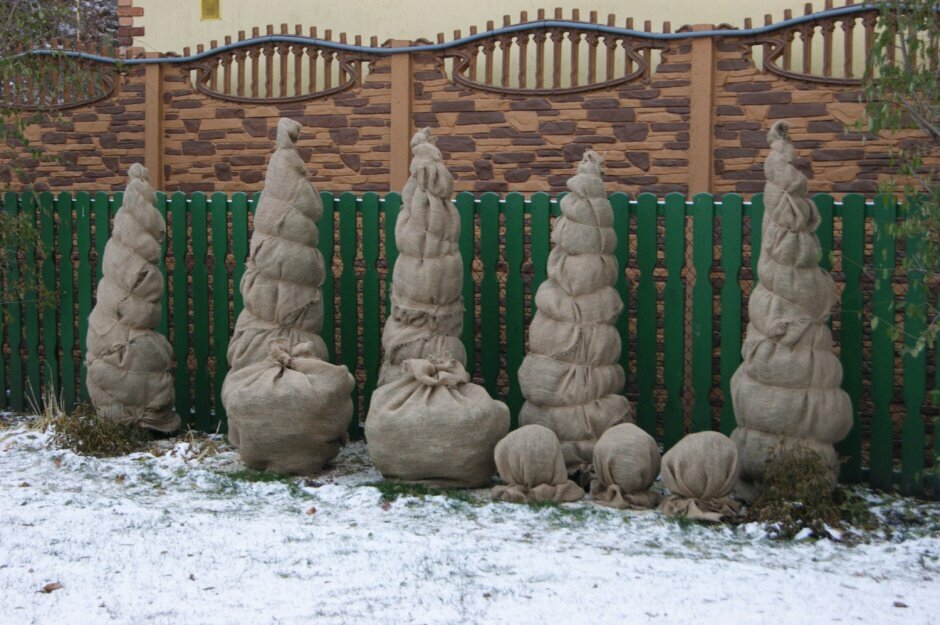
You can remove the protection only when the snow has completely melted.
A representative of conifers will decorate any suburban area. But, although such species are unpretentious, they still need some care. And in this case, with a minimum investment of time, effort and money, you will receive a beautiful landscape design, unique in its kind.

